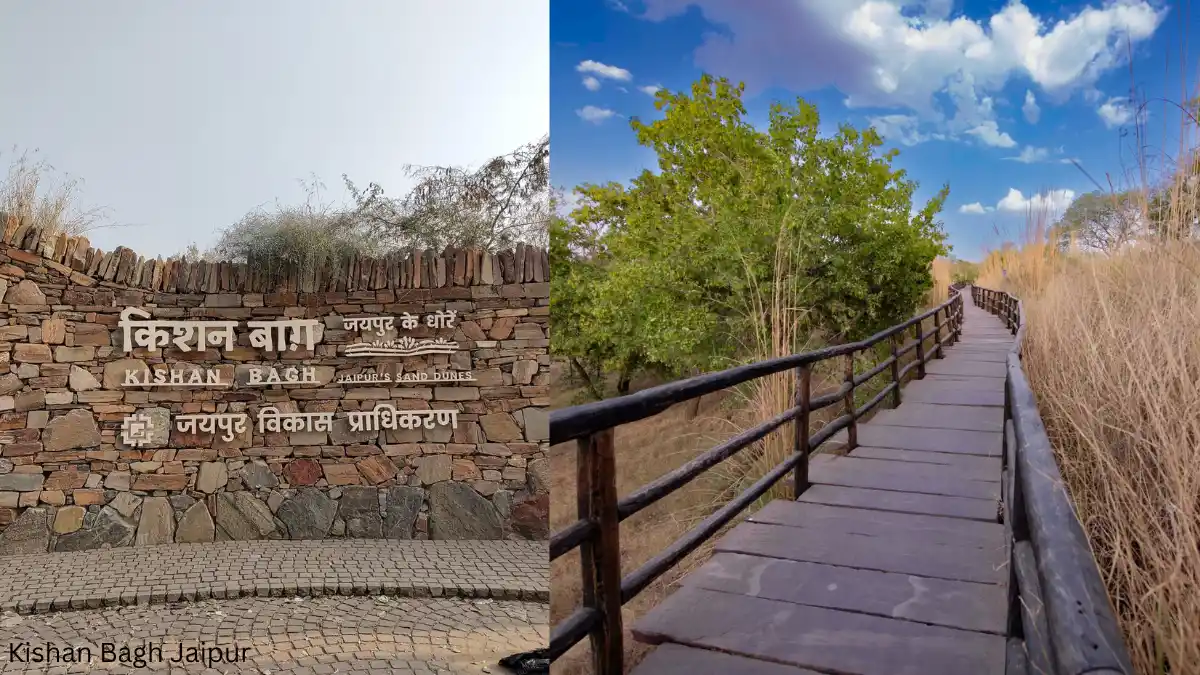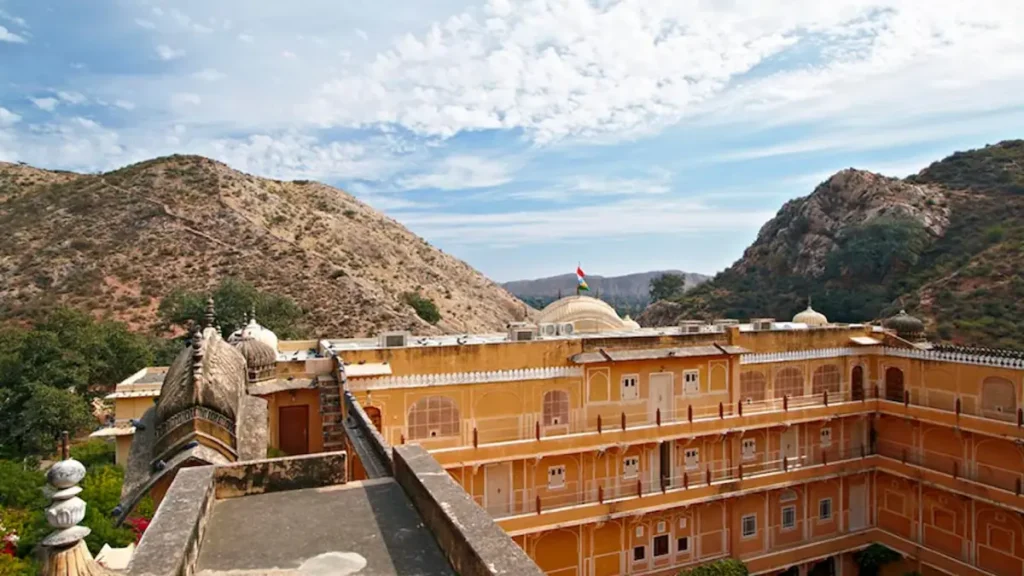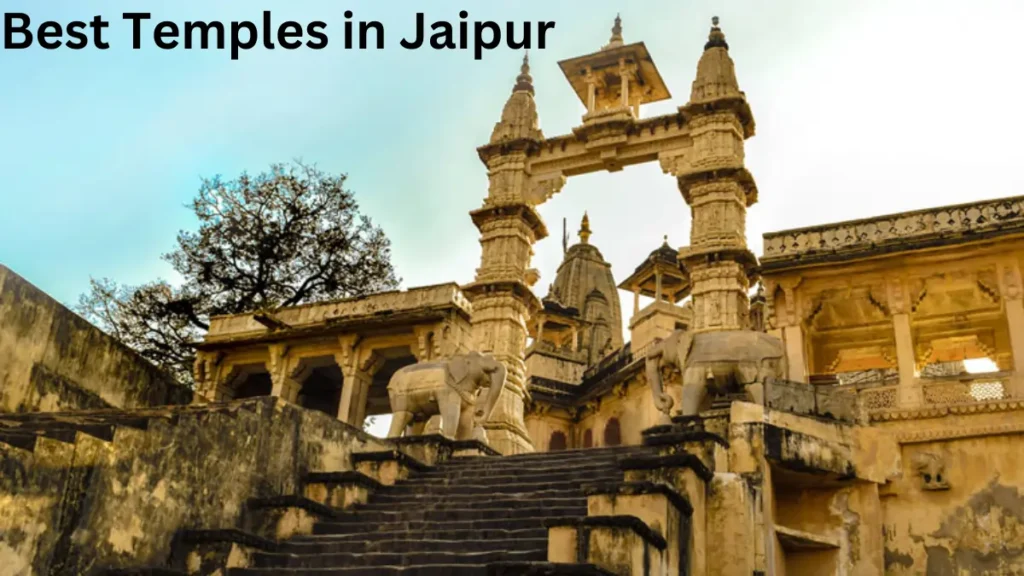Today we are going to tell you about a garden in which we can see a small, beautiful glimpse of the Thar Desert region of Rajasthan. The name of the garden about which we are going to tell you is- Kishan Bagh. This garden has been built recently in Jaipur and resembles the landscape of the Thar Desert and the ravines of Chambal.
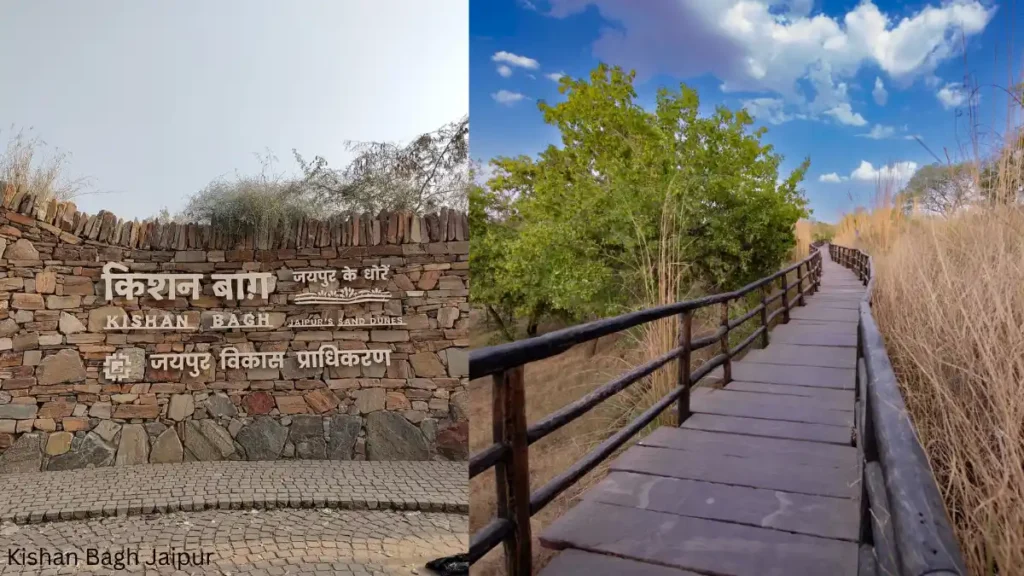
Introduction and development of Kishan Bagh
Kishan Bagh is spread over 30 acres and is situated at the foothills of Nahargarh hill. The inspiration for creating this garden came from his exploration of the desert landscape of western Rajasthan, which the local people call Roi. The responsibility of creating this garden was given to renowned environmentalist Pradeep Krishna by the Jaipur Development Authority (JDA) in January 2016. He was asked if he was willing to shape it into a public park.
Pradeep Krishna took up the responsibility of creating this garden and transformed it into a natural desert landscape. Krishna allowed this garden to continue as a haven for wildlife and a delight for nature lovers. Before creating this garden he worked at the Rao Jodha Desert Rock Park on a 70-hectare rocky hill in Jodhpur, he was excited by the prospect of trying to restore a very different (sandy) desert landscape. Pradeep Krishna is also the author of the acclaimed book, Trees of Delhi.
One thing that is considered unique to Kishan Bagh is its indigenous trees. The Roi landscape is dominated by small shrubs such as senio, bui, and khimp. There are many such small bushes and trees in this garden which have a significant place in our lives.
Architect of Kishan Bagh:
Architect – Golak Khandual
Apart from the ecological restoration of Kishan Bagh by Pradeep Krishna, the efforts of architect Golak Khandual should also be appreciated. Khandual recreated the magic with local materials and forms – from the dry stone walls at the gate to the thatched roofs and viewing deck of the visitors’ centre.
What Can You See in Kishan Bagh?
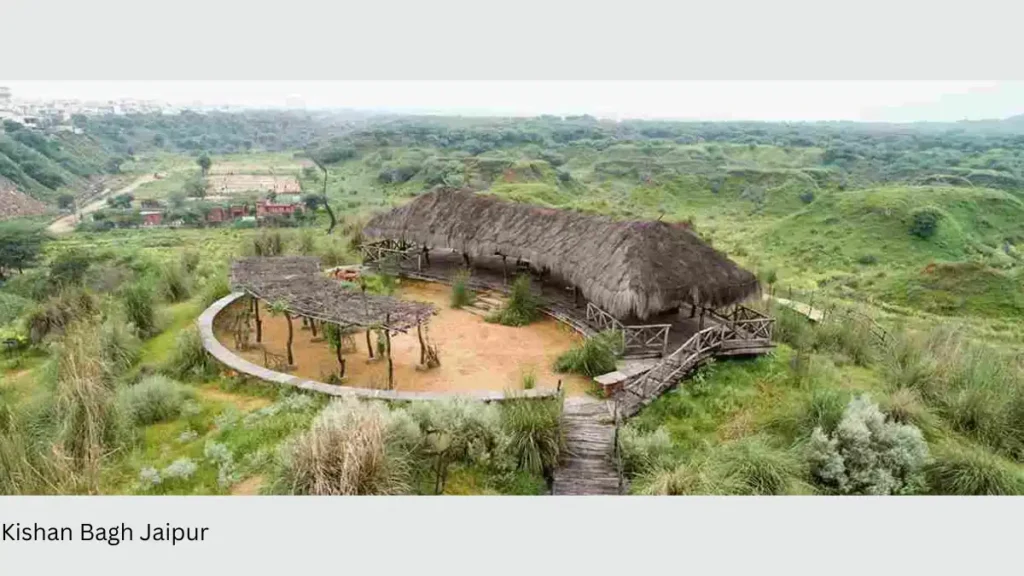
Inside Kishan Bagh, we will learn about our indigenous trees, different types of rocks, desert soil, etc. The desert-like design of this garden is crucial for our culture, life, animals, birds, and nature.
By creating this garden, emphasis has been laid on local plant and tree conservation. Every part of native trees is used in some way or the other. This garden still provides a breath of fresh air as it still retains its original form.
Nowadays, in most of the parks, the topography is also changed along with landscaping, but in this garden, instead of Gulmohar, you will see only Dhok trees and Sarkanda or Munj grass in their natural splendour.
The panoramic view of the entire area, including the western slopes of Nahargarh hills (viewing deck), has also been preserved intact in this garden. The natural water body within the garden has been redesigned to resemble a desert oasis.
Kishan Bagh, a hidden place in Jaipur, still serves as a habitat for birds, insects, and animals, including grasshoppers, pheasants, Indian rollers, bee-eaters, mynas, peacocks, desert foxes, jackals, and nilgai.
Crying Scenario
The Roi landscape (desert landscape of western Rajasthan called Roi) makes for a nice landscape inside this garden. This garden provides a good ecology for the growth of various shrubs and plants. There are bushes and small plants like Sinio, Khimp, Bui, Dhatura, Akara, etc., in this park.
This park also has Dhok trees, white lotus flowers, Sarkanda or Munj grass, and Thor trees, which leave the impression of indigenous things. Here in this park, trees and plants have also been planted through clones. Wooden benches have also been made in many places.
The favourite food of Chinkara deer is senio, which dries up in summer and turns green again when moisture returns to the air. This entire landscape is similar to the monsoon forests of the Aravalli Hills. Bui has white cotton-like growth, and khimp bushes grow in and around sand dunes and reach 7 to 10 feet high. Kash is a type of weed that is used extensively in villages. Its white flowers make the view of Kishan Bagh even more attractive.
Seven species of grass have also been planted in this park, which grow in the Jodhpur, Jaisalmer, Barmer, Bikaner, and Jalore areas of Rajasthan. There are Diya, Makdo, Dhaman, Lapra, Chinki, Dab, Sevan, and Karad. Apart from this, trees and plants of Ronj, Khair, Akol, Kumtha, Kair, Dhonk, Khejri, Lasoda, Gunda, Falsa, Gular, Khimp, Rohida, Peepal, Adusa, Amal, etc., have also been planted here.
Granite Rocks
This garden also has granite rocks millions of years old. Granite is the most prominent landscape of the Aravalli Hills. Many plants like chasmophytes grow in the holes of these old rocks. Chasmophytes are robust plants known to grow with little resources, such as filled open spaces and very limited soil.
Different types of Rocks
Inside Kishan Bagh, different types of rocks and brief information about them have also been explained, which proves to be very important for students.
Here, there are Jurassic landscape stones, sandstone, fine-grained quartzite (iron-like stone, i.e., rusty stone), pure quartz stone (white like salt), rocks formed in the underworld, crystalline stones, pegmatite stones (pink in colour), etc.
Viewing Deck
In this garden, a boardwalk park is constructed using Jaisalmer stone. The viewing deck passes through this park and leads to the viewing platform of the Longhouse or Machan. Another viewpoint in the garden is called Maidan Lookout.
Kishan Bagh Jaipur Location
- 10A, Sector 8 Main Road, Sector 8, Sector 5, Vidyadhar Nagar, Jaipur
Kishan Bagh Ticket Price
- Rs 50 per person for adults
- Free for students
A valid student ID card is required for students to avail the free entry at Kishan Bagh.
Kishan Bagh Timing
- Summer Timings: 6 am to 6:30 am
- Winter Timings: 8 am to 5:30 pm
Charges for Pre-Wedding Photoshoot inside Kishan Bagh
- Rs 5000 are charged for the pre-wedding shoot in Kishan Bagh.
Note – Kishan Bagh remains closed on Tuesday. Apart from Tuesday, you can visit Kishan Bagh (Jaipur) at any time.
